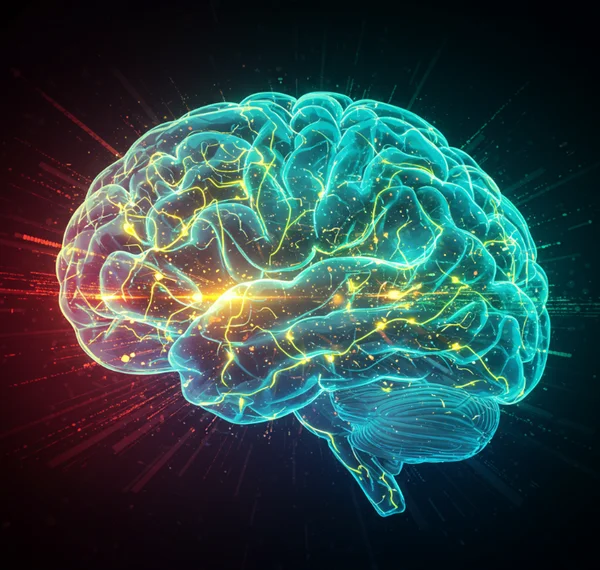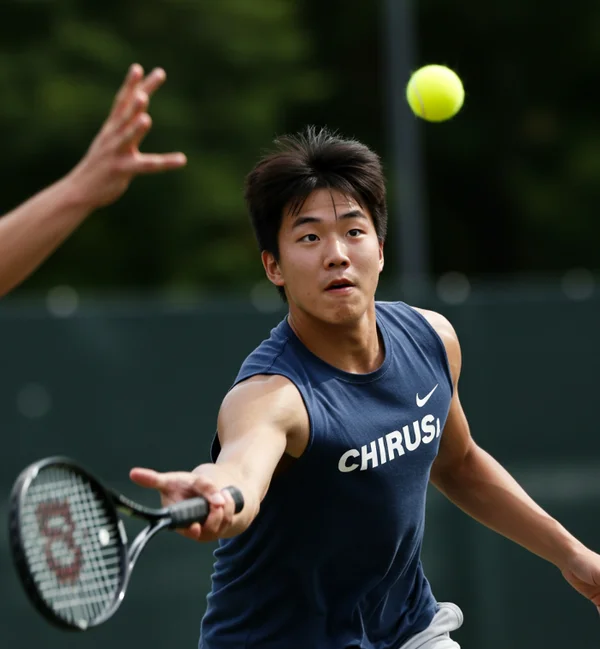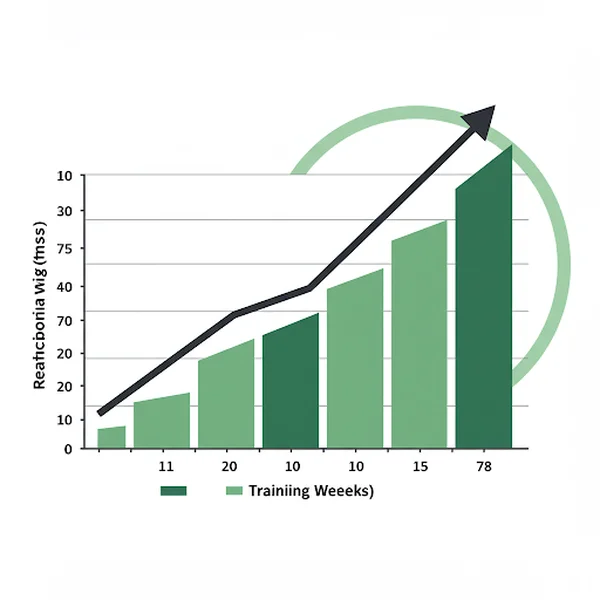Boost Your Reaction Time: Proven Training & Strategies
Unlock Faster Reflexes: Actionable Ways to Train Reaction Speed
Reaction time – that split-second interval between perceiving a stimulus and initiating a response – plays a crucial role in everything from competitive gaming and sports performance to everyday activities like driving. Many wonder, Can you train your reaction time? The exciting answer is yes! While some factors are genetic, targeted practice and specific strategies can significantly sharpen your reflexes. This guide provides proven strategies and training techniques designed to help you achieve a faster reaction time. Ready to start? You can test your current reaction speed right now to establish your baseline.

Sharpen Your Mind: Mental Training for Quicker Reactions
Improving your reaction time isn't just about physical speed; it starts in the brain. Mental training is a cornerstone for achieving quicker reactions. By honing your cognitive skills, you can process information faster and respond more efficiently. How do I train my reaction time mentally? Let's explore some key techniques.
The Power of Focused Attention
Distractions are the enemy of fast reactions. Improving your ability to concentrate intently on a specific task or stimulus is vital. Practice minimizing external and internal distractions during activities that require quick responses. Techniques like single-tasking and eliminating clutter from your environment can significantly enhance your focused attention, allowing your brain to register and react to signals more rapidly, contributing to improving reflexes.
Visualization Techniques for Faster Responses
Mental rehearsal, or visualization, is a powerful tool used by top athletes and performers. By vividly imagining yourself successfully reacting quickly and accurately in specific scenarios (like clicking the moment the screen turns green on a test), you strengthen the neural pathways associated with that action. This mental practice primes your muscles and mind for faster responses when the actual situation occurs.
Mindfulness Practices to Reduce Mental Clutter
A calm and clear mind reacts faster than a stressed or cluttered one. Mindfulness practices, such as meditation or deep breathing exercises, help reduce mental noise and improve your ability to stay present and aware. This heightened state of awareness allows you to perceive stimuli more quickly and initiate a response without being hindered by distracting thoughts, ultimately aiding in faster reaction time.
Physical Reaction Time Training Exercises You Can Do Now
While mental preparation is key, direct physical practice is essential for translating thought into action rapidly. There are numerous physical reaction time training exercises you can incorporate into your routine. What exercises improve reaction time? Here are some effective options:

Practice with Online Reaction Time Tests (like ours!)
One of the most direct ways to practice visual reaction time is by using dedicated tools. Regularly engaging with online reaction time tests provides specific, measurable practice for the exact skill you want to improve – reacting to a visual cue. Using tools like the one on reactiontimetest provides direct practice and allows you to track improvements over time. Consistent click test practice builds muscle memory and sharpens focus.
Classic Ball Drop and Catch Drills
This simple drill requires a partner to drop a ball (like a tennis ball) without warning, while you attempt to catch it as quickly as possible. Varying the drop height and timing keeps you alert and challenges your reaction speed in an unpredictable way. It’s a fundamental exercise for hand-eye coordination and reflex development.
Agility Ladder and Cone Drills
Exercises using an agility ladder or cones challenge your ability to change direction and react quickly to visual cues or commands. These drills improve not only footwork but also overall body coordination and the speed at which you can process instructions and execute movements, contributing significantly to reflex training.
Sport-Specific Reaction Drills
Tailor your training to your specific needs. If you're an athlete, incorporate sport-specific reaction drills. For example, sprinters can practice reacting to a starting pistol (or sound cue), while hockey goalies might use machines that shoot pucks unpredictably. This ensures your reaction time training is directly applicable to your performance environment.
Lifestyle Adjustments to Boost Your Reaction Speed
Your daily habits significantly impact your cognitive function and, consequently, your reaction time. Making conscious lifestyle adjustments can provide a solid foundation to boost your reaction speed. What lifestyle factors affect reaction time? Consider these critical areas:

Prioritize Quality Sleep for Cognitive Function
Sleep deprivation severely impairs cognitive processes, including attention, decision-making, and reaction time. Aim for 7-9 hours of quality sleep per night. A well-rested brain processes information faster and more accurately, which is essential for peak performance and quick reflexes.
Nutrition for Brain Health and Optimal Reactions
Your brain needs the right fuel. A balanced diet rich in antioxidants (berries, leafy greens), omega-3 fatty acids (fatty fish, walnuts), and complex carbohydrates provides sustained energy and supports cognitive function. Proper nutrition is fundamental for maintaining sharp focus and enabling optimal reactions.
Stay Hydrated: Why Water Matters for Speed
Dehydration, even mild, can lead to fatigue, reduced concentration, and slower reaction times. Ensure you stay adequately hydrated throughout the day. Water is crucial for optimal nerve function, which directly impacts the speed of signal transmission in your body.
Manage Stress to Maintain Peak Performance
Chronic stress floods your body with cortisol, which can impair cognitive function and slow reaction times. Incorporate stress management techniques like exercise, meditation, or spending time in nature. Reducing stress helps you maintain a clear head and achieve fast reaction time when it matters most.
Using Reaction Time Tests to Track Your Training Progress
How do you know if your efforts are paying off? Systematically tracking your training progress using reliable tools is essential. Reaction time tests are invaluable for this purpose. How do I know if my training is working?

Establishing Your Baseline Reaction Score
Before you start any dedicated training, measure your current reaction time. This gives you a starting point, or baseline score, against which you can measure future progress. It helps set realistic goals. Establish yours easily with our online reaction test.
Monitoring Improvements Over Time
Test yourself regularly (e.g., weekly) under similar conditions (time of day, alertness level). Consistent monitoring allows you to see how different training methods and lifestyle changes are impacting your scores. Observing improvements provides motivation and validation for your efforts. Using a consistent benchmark test is key here.
Identifying Plateaus and Adapting Your Training Plan
Progress isn't always linear. If your scores plateau, using test data can help you identify areas needing adjustment. Perhaps you need to increase the difficulty, try new exercises, or address a lifestyle factor. Regularly adapting your training plan based on tracked results ensures continued improvement.
Start Improving Your Reaction Time Today!
Improving your reaction time is an achievable goal through a combination of mental training, physical exercises, positive lifestyle choices, and consistent progress tracking. By focusing on sharpening your mind, practicing specific drills, optimizing your daily habits, and using tools to measure your gains, you can unlock faster reflexes.
Ready to put these strategies into practice and see how fast you can become? Visit reactiontimetest to test yourself and start your journey to faster reflexes! Don't forget to monitor your progress and adapt your approach as needed.
Boosting Your Reaction Time & Training
-
Can reaction time really be improved?
Yes, absolutely. While there's a genetic component and a physiological limit, most people can significantly improve reaction time through consistent and targeted reaction time training and lifestyle adjustments. Practice strengthens the neural pathways involved in processing stimuli and initiating responses. Reaction time potential varies, but improvement is almost always possible.
-
How quickly can I see results from reaction time training?
This varies depending on the individual, the consistency and type of training, and lifestyle factors. However, with dedicated practice several times a week, many people start noticing measurable improvements within a few weeks. Consistent tracking is key – you can monitor your progress here to see changes firsthand.
-
Does playing video games automatically give you faster reaction time?
Often, yes, especially fast-paced action or first-person shooter games. These games inherently require quick visual processing and rapid responses, acting as a form of reaction training. However, the improvement might be specific to the game context. Dedicated exercises can offer more generalized and targeted benefits for faster reaction time.
-
Are there specific foods or supplements for quicker reactions?
There isn't a single "magic" food or universally proven supplement guaranteed to instantly boost reaction time. The best approach is a balanced diet supporting overall brain health – think antioxidants, omega-3s, and stable energy sources. Staying well-hydrated is crucial. While some supplements (like caffeine in moderation) might offer temporary alertness, focus on sustainable nutritional habits. Always consult a healthcare professional before starting new supplements.